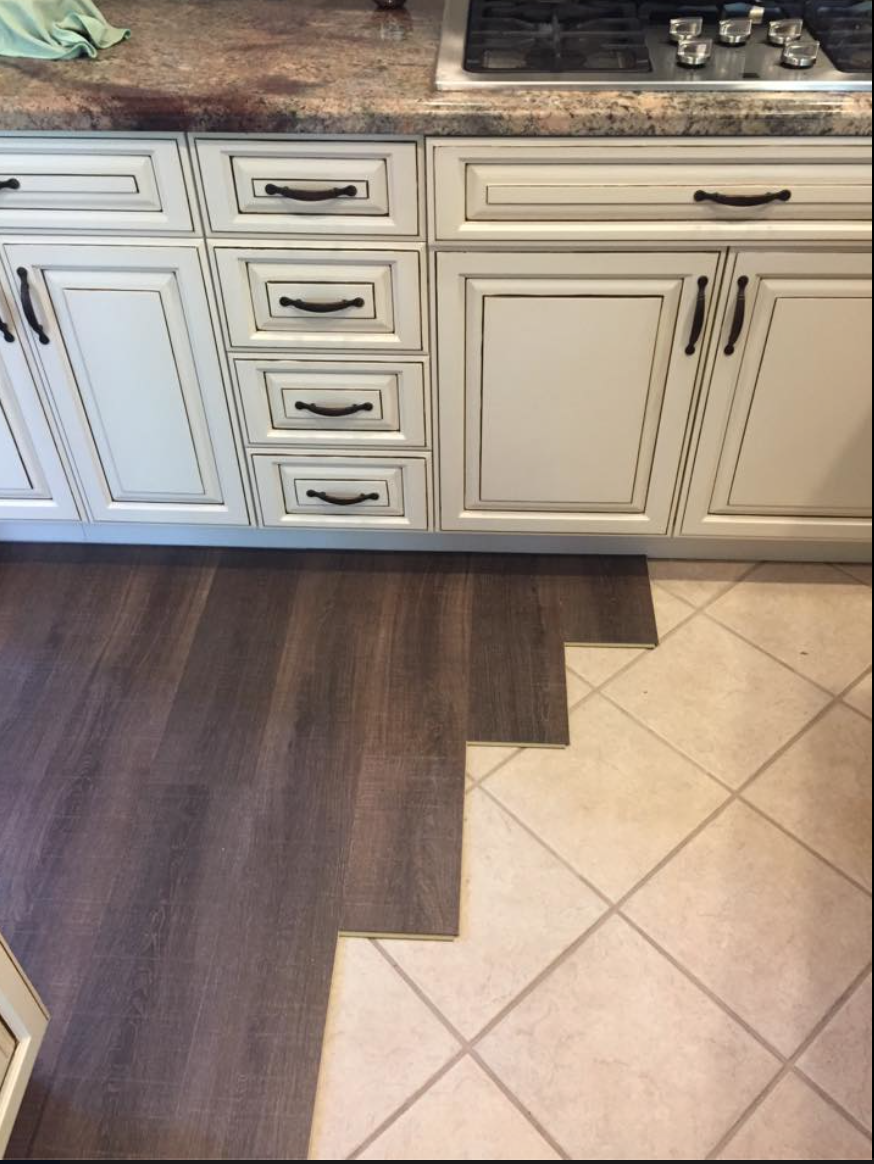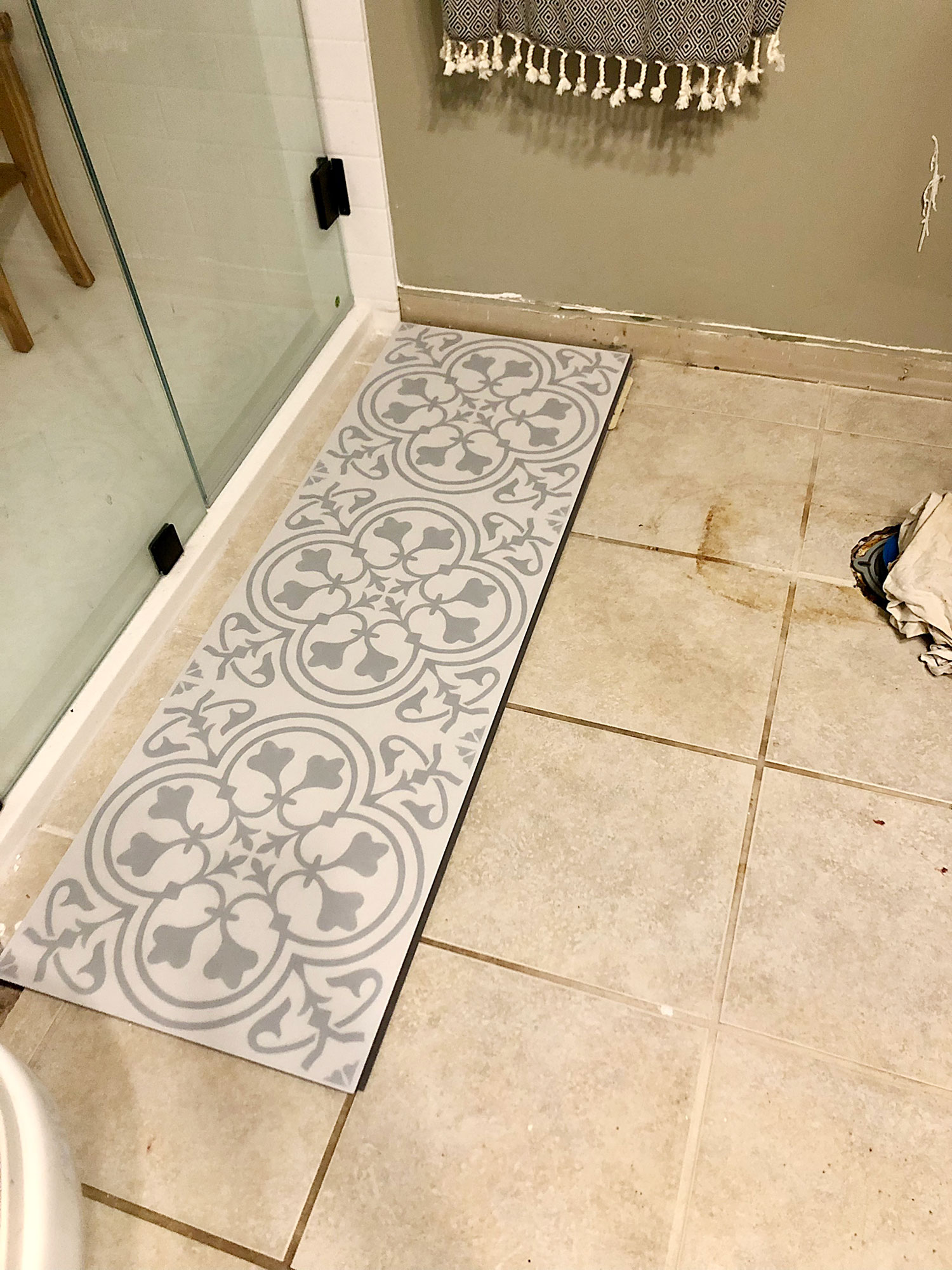Laminate, luxury vinyl tile, and engineered wood flooring can all be installed over existing tile. Thin carpet and interlocking floor tiles also provide options for covering up old tile.
Choosing the right flooring to go over tile can revitalize any room, offering a fresh and updated look without the need to remove the old tile, which can be costly and time-consuming. Understanding which types of flooring can successfully go over the existing tile is crucial for homeowners looking to make a change without extensive renovation.
Certain materials like laminate or luxury vinyl are especially suited due to their flexibility, ease of installation, and ability to handle potential unevenness in the tiled surface. They come in various styles and designs, allowing for personalization and alignment with current interior trends. With a focus on durability and aesthetics, selecting from these options ensures a seamless transition while adding value to your space.

Credit: www.homedit.com
Introduction To Flooring Over Tile
Many homeowners wonder if new flooring can cover old tile. The answer is yes, with some considerations. New flooring can be installed over tile, but the tile’s condition is crucial. Ensure the existing tile is level and firmly attached before planning the update.
Flooring options like laminate, vinyl, or hardwood can go over tile. Yet, the decision to use these materials should factor in the benefits and drawbacks. Laying new floors over tile saves time and labor during installation. It can also reduce home renovation costs significantly.
On the other hand, extra floor height might affect transitions to other rooms. Consider potential issues with doors and appliances, which may require adjustment to accommodate the new height. Evaluate the tile’s surface, as it needs to be even. Uneven surfaces can lead to uneven new flooring, which causes long-term problems.
Types Of Flooring That Can Be Installed Over Tile
Floating floors make renovation easy. Laminate and engineered wood are top choices. They don’t need glue or nails. Just lay them over existing tiles. Floating floors expand and contract with weather changes. This makes them versatile and practical.
Luxury Vinyl Plank (LVP) and Tile (LVT) are robust options. They mimic hardwood and stone. LVP and LVT are water-resistant. They are good for any room, including kitchens and bathrooms. Their simple installation is a bonus.
Carpet tiles add warmth and comfort. They are easy to fit and replace. Pro tip: Choose dense, interlocking ones for better insulation.
Epoxy and resin floors create durable surfaces. They resist stains and spills. Perfect for garages and basements, their seamless finish looks modern.
Click-together tiles are quick to install. No special tools needed. They are ideal for a weekend DIY project.
Preparation And Installation Considerations
Before installing new flooring over tile, careful assessment is essential. The existing tile’s level and stability ensure a solid foundation for your new floor. A thorough cleaning comes first, followed by applying a primer to secure adhesion.
Underlayment or subfloor installation may be necessary to create an even surface. This is important for new flooring material. Specific room shapes or sizes may require trimming and cutting of the new flooring. Don’t forget, moisture barriers and soundproofing layers also contribute to the flooring’s longevity and comfort.
Special Scenarios And Custom Solutions
Heavily textured or damaged tiles need a careful approach. Experts often suggest using a thin overlay to ensure an even surface. In some cases, a self-leveling compound prepares the tiles for the new floor.
Dealing with height differences between rooms can be tricky. Transition strips offer a seamless way to connect different floors. Selecting the right strip ensures smooth and safe passage across the flooring.
In-floor heating systems require tiles that can handle the heat. This means checking compatibility before installation. For successful heating, proper thermal conductors as overlays are vital. These systems should be installed by a professional.
For outdoor spaces, choosing weather-resistant overlays is crucial. Materials such as stone or composite work well over existing patio tiles. They withstand sun, rain, and temperature changes.
Maintenance And Long-term Care
Caring for new flooring over tile requires attention. Laminate, for instance, demands regular sweeping. Use mild cleaners to prevent damage. Vinyl needs just mild soap and water for a fresh look. Engineered hardwood thrives with specialized hardwood cleaners.
Thinking ahead can save effort and cash. Choose floors that allow easy plank removal. It simplifies replacement tasks. Click-lock designs offer this convenience. With floating floors, room for natural expansion and contraction is necessary. Leave small gaps around the edges, hidden by baseboards. These steps ensure a lasting, trouble-free surface.


Conclusion
Selecting the right flooring to lay over tile is a key decision for any home renovation. Consider factors like thickness, material compatibility, and installation requirements. Laminate, vinyl, and engineered wood top the list of suitable options. Your choice can transform a space, blending ease of installation with enduring style.
Make an informed decision that suits your home’s needs and aesthetics.




